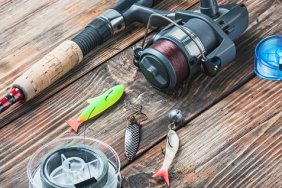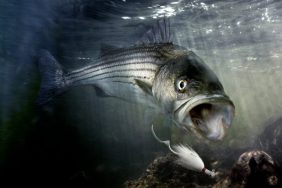 One vital skill an angler can learn is understanding how fish relate and perceive their environment. One concept that falls within this realm is that of “edges.” There are fishermen who understand this concept, those who have a limited understanding, and those who aren’t familiar with it at all. Edges aren’t just where a specific collection of structure stops suddenly, but more specifically where two different fish-holding areas—shadows and light, bottom composition, etc.—meet. Fish tend to relate to these borders due to protection from predators or contrarily, ambush opportunities. Understanding how bass relate to different edge types, as well as what lures to throw when faced with each type, will make you a more well-rounded angler. Today, we’ll dive into Part One of a series that clarifies what edges are, beginning with holes, or pockets.
One vital skill an angler can learn is understanding how fish relate and perceive their environment. One concept that falls within this realm is that of “edges.” There are fishermen who understand this concept, those who have a limited understanding, and those who aren’t familiar with it at all. Edges aren’t just where a specific collection of structure stops suddenly, but more specifically where two different fish-holding areas—shadows and light, bottom composition, etc.—meet. Fish tend to relate to these borders due to protection from predators or contrarily, ambush opportunities. Understanding how bass relate to different edge types, as well as what lures to throw when faced with each type, will make you a more well-rounded angler. Today, we’ll dive into Part One of a series that clarifies what edges are, beginning with holes, or pockets.
When it comes to edges, pockets are perhaps the easiest type to locate because they’re quite visible from the surface. What many anglers fail to realize, is that there is a significant amount of space under weeds and pads. Even dense collections of pads hide a substantial amount of open water beneath them. Bass tend to use these areas for the protection from sun and predators, as well as the prime opportunities to ambush baitfish. Hopping a frog, mouse, or soft plastic jerkbait along the surface of the pads is a great way to start dissecting spans of pads on a pocket-by-pocket basis. The key, though, will be to make sure you hit as many pockets as you can during the retrieve. Give bass a second to take the bait, then quickly set the hook to get them out of the pads before they wrap themselves around the weeds.
Aside from surface pockets, there are also pockets beneath the surface to look out for, as well. These openings in weed flats can be caused by a variety of factors, such as when there's an object at the bottom, like a rock or log, that prevents weeds from growing, but attracts predator fish that are looking for a good spot to ambush prey. Flipping a jig or a Texas-rigged worm is an excellent way to pick apart these pockets with great results.
Pockets are much more than simple holes in a collection of pads, and identifying and exploring them to their fullest potential will pay off in dividends. The tips outlined above are a great start to locating pockets and fishing them effectively. Be sure to come back for Part Two, where we’ll explore weedlines.








